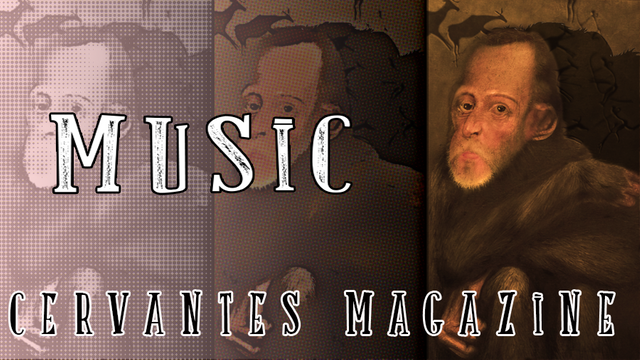Cervantes Magazine Number 20: Music

As modern people, we have historically a century of catchy songs, structured to the smallest detail at our disposal, to listen to all the times we want. It is no secret that the most Pop tunes are usually 3-minute pieces with the classic verse-chorus-verse form.

However, if we look under the mainstream, we can find bands and artists who have managed to create their works using somewhat less conventional tools. And since this week the @Cervantes Magazine is focusing on Instinct, I decided to delve a bit into an old but exciting way of composing and playing songs: The Jam
What is a Jam?
To Jam, or Jamming, refers to a musical exchange between performers that usually occurs live and in the moment, that is, with little direction or structure. Usually, there is a tonality and some simple chord progression, and the group of musicians starts from there to explore all the possibilities they can, both alone and together.
Logically, this ends in sessions where the capacity for improvisation and harmonic understanding are key, but even more than that, where instinct is the basis of everything. Since we are talking about creating music completely live, it is vital that the participating musicians use their instinct to connect with each other, listening to each other, giving space and eventually, assembling in such a way that it leads to incredible pieces full of life.
Obviously one of the oldest forms of "Jam" is Jazz. Hundreds of Jazz players have created such iconic pieces to improvise on them, that nowadays in the conservatories they are known as "Standards" and serve to study harmony and explore both personal and group musicality. We could talk about "Chicken", composed by Pee Wee Ellis or the mythical "Spain" of Chick Corea. But I'm going to focus on more modern things.
Frank Zappa
Although Zappa is recognized as an incredible and thoughtful composer, his humorous and adventurous side shone while Jamming. What began as sections that seemed well thought out, ended in improvisations of up to 20 minutes. Much of this was achieved by the legendary demand of Frank to his musicians, who rehearsed with him up to two months before touring, for 5 or 6 hours a day. So, by the time they started traveling, the band was so connected that they could play virtually any genre with just a gesture from their director.
The Grateful Dead
There are two types of people who listen to The Grateful Dead: those who love the hits, and those who really love the band. Jerry Garcia and co. were not only masters of improvising sets of up to 2 hours, but sometimes they did not even plan a set, they just showed up and started playing whatever they felt in the moment. So each concert was unique and unrepeatable.
The Mars Volta
As following Jerry Garcia's Legacy, The Mars Volta also featured improvisational moments during their shows. This served not only to maintain a good mood during tours, but to test completely new material in front of the public, and then polish it in studio. As some may know, Omar Rodríguez is a very prolific musician for his part, with more than 40 albums to date. Many of them come from Jam sessions.
La Fania All-Stars
For us Latinos, La Fania is - and should be - a religion. Rarely in history have so many talented musicians and singers come together to create immortal songs. However, much of their live magic was precisely during jams that usually began in the Codas (the repetition of a musical motif) of some of their pieces.
And what better example of this than the classic "El Ratón”?, a song so famous that it became a standard
I hope that as always you have enjoyed reading and jammed a little with me!. See you next time!.
[Return to Home page]

buen recuerdo el jacob y santana